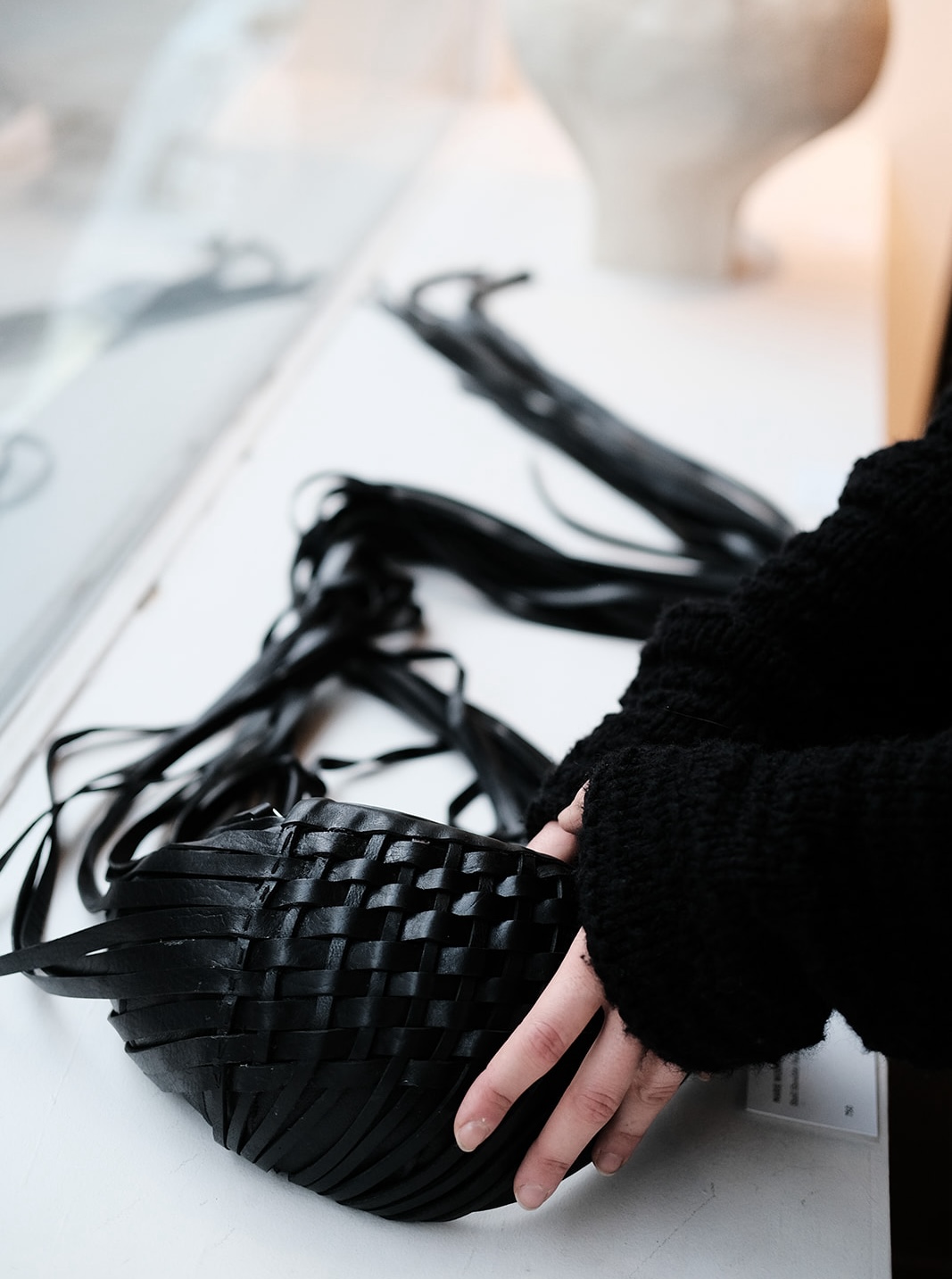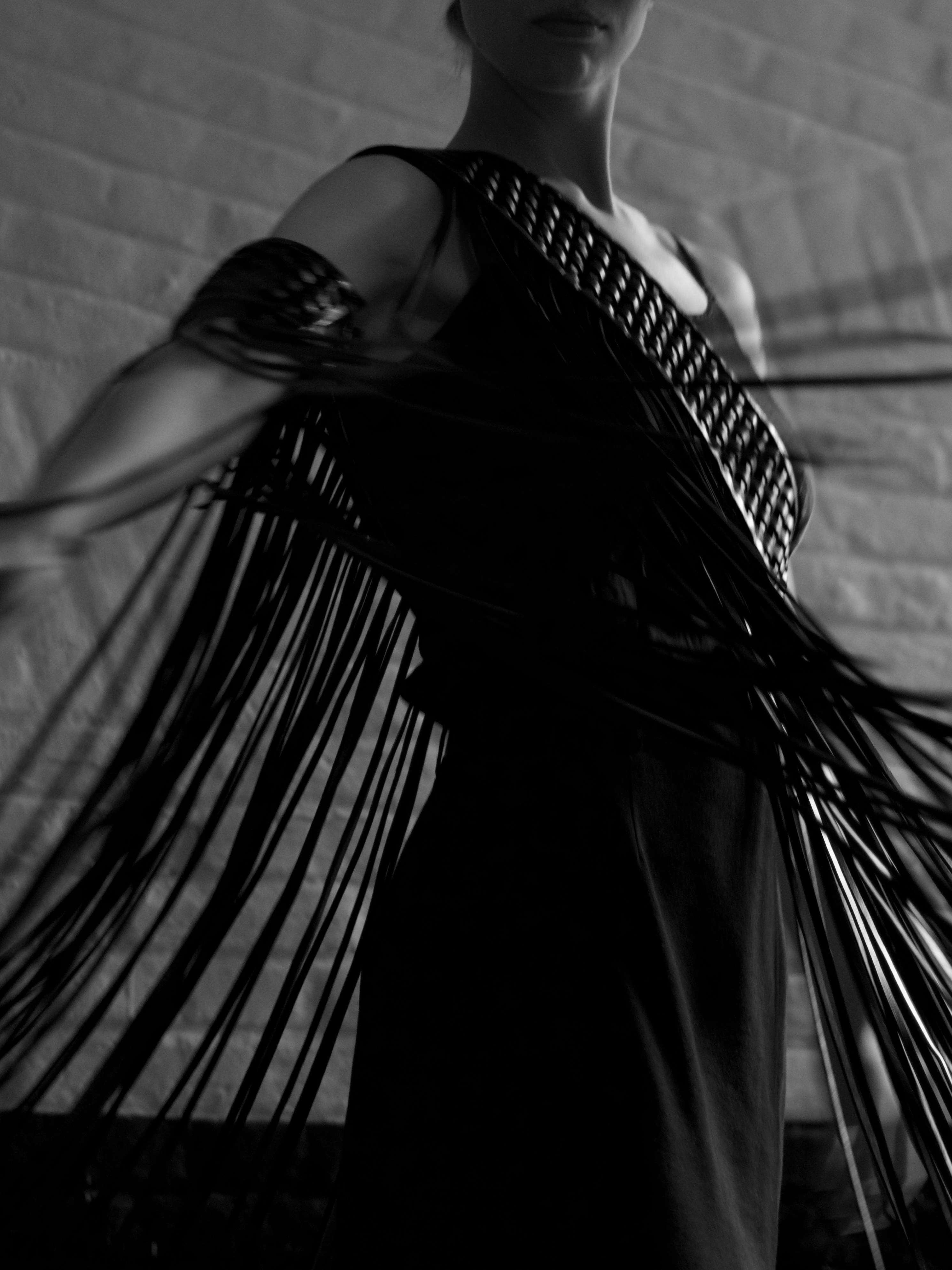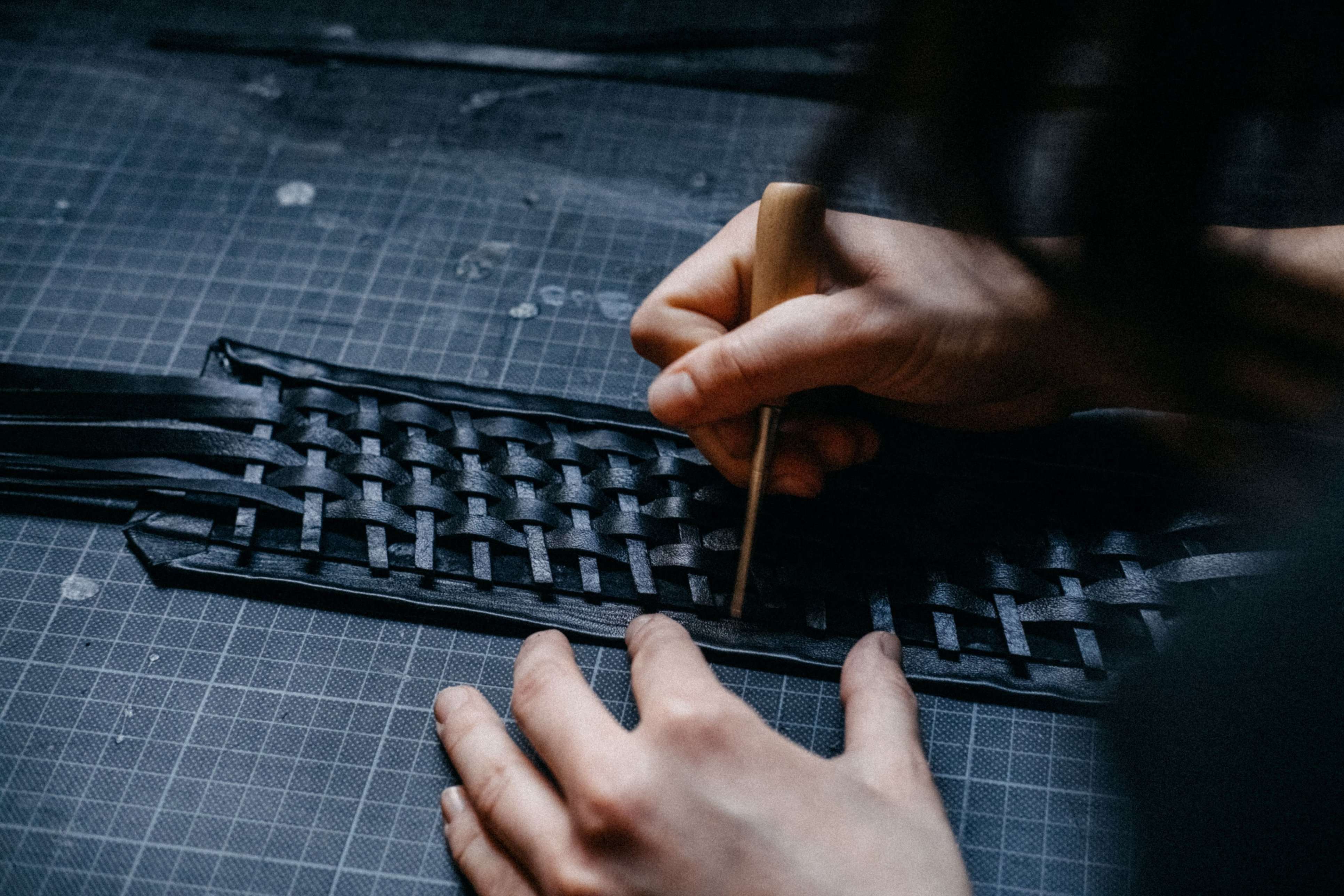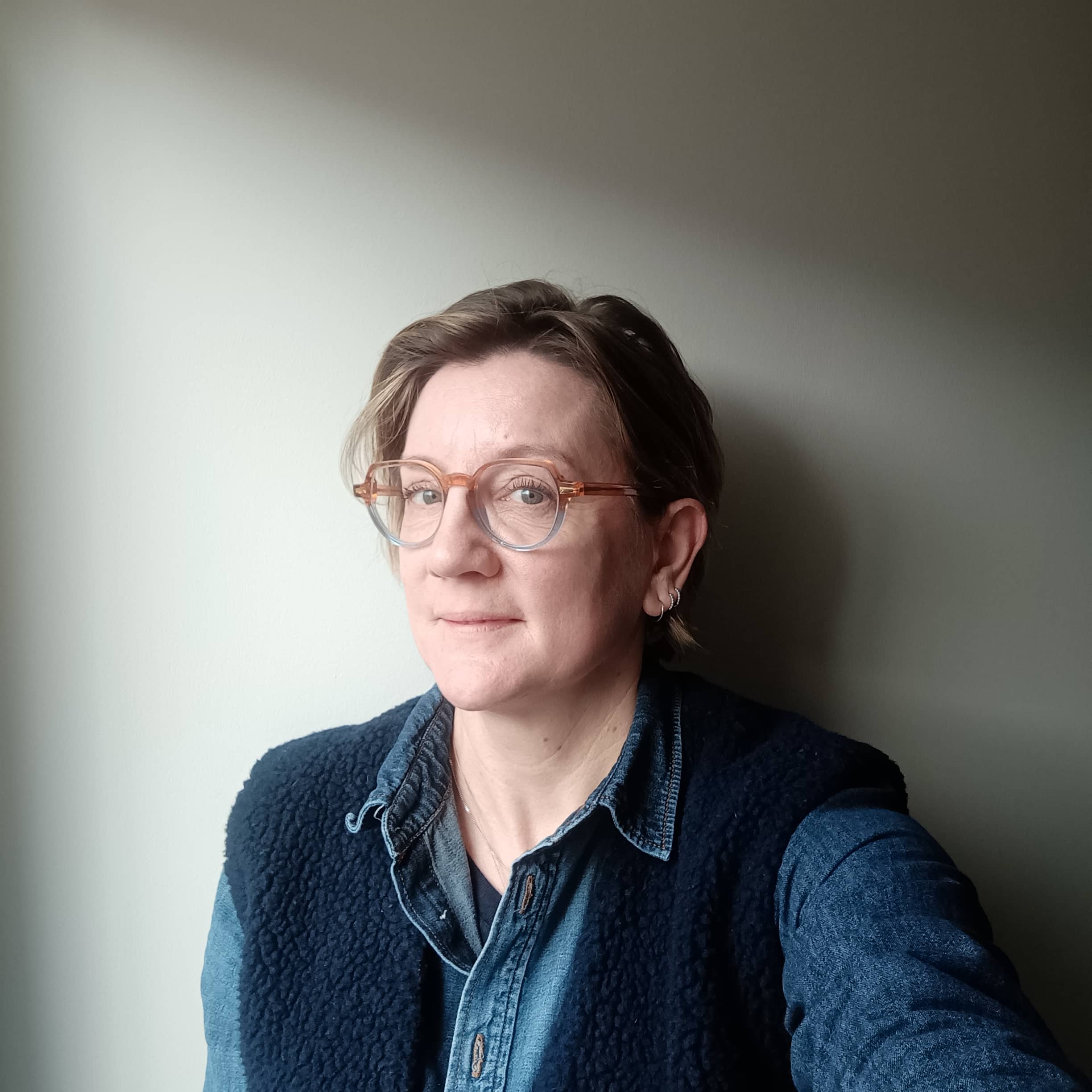Marie Bernadette Woehrl and her world of woven leather
Winner of the Eyes on Talents x Premiere Classe competition in 2023, the designer will be at the event from 1 to 4 March with Collection 2.
The accessories designer answers our questions from Antwerp, where she lives.
You were born and raised in Germany, then studied in Italy. Why did you move to Antwerp?
I love Antwerp for its fashion history. In its heyday, its fashion was known for its individual style and personal vision, a very strong vision. Then my first professional experience as a designer was with Ann Demeulemeester, and the brand and her work had a profound influence on me. Her creations are much more than a mere product, they're an atmosphere and an aesthetic, something pure and poetic that seems to transcend fashion. I try to capture that energy with my own work and being close (geographically) to it keeps me on track.
Why did you choose to work with leather?
I became interested in leather when I was studying in Italy at the Accademia Costume e Moda, where we had a leather workshop and visited tanneries and leather goods manufacturers. I was inspired by Italy's pride in its leather heritage, and the emphasis on the shape and proportions of the object bag resonated with my intuitive and often sculptural creative approach.
Leather is a material with character which guides the creative process, gives shape and enhances details during execution. Finally, I love the idea that leather becomes more beautiful with age, because I want my creations to be cherished and worn for a long time. I see this longevity as the only way for any goods to be consumed responsibly in this day and age. Our behaviour as consumers needs to be questioned and needs to evolve.

Tell us about Collection 2.
It's a continuation of the design research I started in Collection 1: organic shapes, textures and fringes as a basis for elegant and versatile leather goods and sculptural bags. I like to concentrate on a single material, as over time this will allow me to really understand its characteristics in depth and design it in the best possible way. Apart from that, I'm busy stabilising and strengthening the brand, building an independent business around this project that's only a year old. I also have to launch my online shop and develop other visuals with my artist friends.
What do Premiere Classe and Paris represent?
Paris is "THE big fashion city" and coming here for Premiere Classe means showcasing my work to the world, not just my cosy home in Antwerp. For me, it means upping my game, stepping out of my comfort zone and being amidst the buzz of the most demanding and sophisticated fashion hotspot possible. For a young brand like mine, being invited by Premiere Classe is a huge opportunity, one I'm very grateful for. I'm thrilled to meet so many international industry experts, making new contacts and taking big steps forward with my project.

What are your sources of inspiration, your favourite artists?
My inspirations generally come from a detail that catches my eye: a shape, or a motif. It can be any type of object, a work of art or a random observation from everyday life. The book "How to wrap five eggs" on Japanese wrapping techniques was the starting point for this style of accessory making - there's a simple yet ingenious inventiveness in these objects. But most of my ideas come from the process: I experiment by arranging volumes and straps on my dressmaker's doll or on myself; I move them around, I move with them until I come up with something interesting.
Otherwise, in terms of attitude, I admire Patti Smith's cool yet simple attitude, her comfort in her own body. Natural, unpretentious personalities are very inspiring to me. Recently, I've been particularly interested in the work of American artist Lenore Tawney, who is considered a pioneer in elevating craft processes to the level of fine art. I also like the atmospheres and compositions of the Belgian painter Léon Spilliaert, the simplicity of Brancusi, early twentieth-century photography... In general, references to the past from modern times seem too quick and confusing for me to follow. That's also why craftsmanship speaks to me: it respects time, rewards patience and honours the object. I think we have a lot to learn from this mindset, both as creatives and as individuals in the 21st century.

